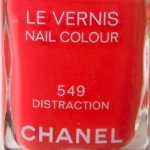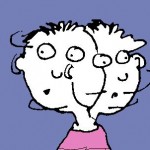Writing is like driving at night in the fog. You never see further than your headlights, but you can make the whole trip that way. – E. L. Doctorow
Writing is like driving at night in the fog. You never see further than your headlights, but you can make the whole trip that way. – E. L. Doctorow
I wrote this article for the Mondo Learning Solutions newsletter.
Many years ago, a sappy book declared, “Love means never having to say you’re sorry.” A lot of otherwise smart managers took this a step further, deciding that business and apologies don’t mix. They couldn’t be more wrong.
Customer service has become an essential part of all business these days. We recently did a multi-session awareness-raising project for the IT department of a major university focusing on customer service – although these highly skilled folks rarely deal with anyone outside of their own organization. Even those who never ring a register or shake hands with a client need to know how to fulfill the expectations of everyone they encounter in the workplace.
And when – occasionally but inevitably – those expectations aren’t met, you’ve got to make it right. Good relationships, quality, reputation, and customer loyalty demand that you do something. And the first thing you should do is apologize.
Your employees might resist. “Why should I admit I might have done something wrong? Wouldn’t I open myself up for blame, attack, maybe even liability?” you might hear. Here’s how to explain to them what a real apology is all about.
What an apology isn’t.
A real apology has nothing to do with accepting blame. It doesn’t assure the customer you’ll pay for repairs. It doesn’t even mean you’ll take responsibility for fixing the problem. (If you do take responsibility, that’s another statement that comes later, after you apologize.)
What an apology is.
A real apology is nothing more than a sincere acknowledgement that your customer isn’t satisfied. It’s a statement that you recognize your customer’s feelings, and that you wish he or she felt better about the situation. That’s all.
Examples: “I’m sorry you were inconvenienced.” “I’m sorry you feel you aren’t getting enough information.” “I’m sorry you’re having a hard time.”
Another word for recognizing the other person’s emotions is empathy. You don’t have to join in the emotion or even agree that it’s justified. But you should let your customers know that you’re aware of their frustration, anger or disappointment – and that their trouble means something to you.
Customers love it.
An apology shows your customers and colleagues that you care about how your work is received – that you want them to have a good experience working with you. Above all, that you’re on their side. So rather thanaccepting blame, a sincere apology helps defuse blame. The customer stops seeing you as the problem, and starts seeing you as an ally in finding a solution.
It’s how you say it.
Make sure it’s sincere. Remember that apologizing actually puts you in a position of strength: it takes a big person to respond to criticism by being open rather than defensive. So take a moment to look at things from your customer’s point of view, and then speak with empathy.
Watch out for the “non-apology.” (We hear politicians make these all the time.) Those run something like this: “If anyone was offended by what happened, that wasn’t the intention, and the entire situation has been blown out of proportion.” This attempted apology fails on all counts: no acknowledgement of feelings, no openness, and no personal connection.
An apology is more powerful if you put yourself into it. Use an “I” statement, such as, “I’m sorry you’ve had such a frustrating time with this,” rather than, “These things can be frustrating.” Remember, people want to feel that you’ll work with them to help resolve the situation. Impersonal statements won’t create that trust.
First apologize, then investigate.
As soon as you hear a complaint, apologize. Don’t wait until after you explore what happened, who did what, and what the solution might be. You’ll get the information much more easily if your customer knows that his or her feelings are acknowledged and respected.
Just do it.
So give it a try! You’ll find that you end up with better communication, more effective problem solving, and, best of all, more satisfied customers.
The best way leaders can teach employees to apologize is by example. Recognize that an apology is a sign of strength, and give them yourself when circumstances demand it. You’ll create trust and good will – and you’ll also jump-start a culture of responsibility, kindness, and excellence. Big return for a few small words.
An article we recently published in ASTD Links magazine.
Your clients meet you at the door of the conference room. You can see in their faces that they’re looking forward to the meeting. So are you. When you work on projects together, you can feel the energy in the room. Everyone sits up, leans forward, and laughs. Ideas appear out of nowhere. Everyone feels that they’re an important part of the process – and they’re committed to your success together.
For the independent consultant, one of the most important skills (and greatest joys) is collaborating with clients. When you and your clients can truly work together, you’ll strengthen your relationship with them and produce the best results.
How can you create dynamic collaborations with your clients? Here are some dos and don’ts, drawn from our many years of experience.
DON’T come in with a ready-made answer.
When clients have a hand in creating a solution to their problem, they value the result more. Plus, they know things about their company or situation that you don’t: things that can make or break your project. Don’t close the door on important discoveries.
DO leave your ego at the door.
It’s tempting to want to assert yourself as The Expert – after all, isn’t that why they hired you? But focusing on yourself gets in the way of creativity. You can’t hear a great idea coming from someone else if you’re busy thinking up your next wise pronouncement.
DO acknowledge others’ needs and ideas.
Even if you don’t see the relevance, it’s important to them to be heard. Make sure you listen, and thank them for their contributions.
DO express your opinions frankly but diplomatically.
They’re consulting you for your knowledge. It’s your task to deliver your considered view of things, even when your clients aren’t sure they want to hear what you’re saying. Make it easy to take, if you can, but make it honest and clear.
DON’T defer to clients when you know they’re wrong.
We learned this the hard way! A client we were working with wanted a particular interactive exercise to last a half-hour. Our guts and experience told us we couldn’t push it longer than about 15 minutes – but we overrode our instincts and prepared the material. Sure enough, the participants became restless about halfway through. We squirmed, but we learned to trust ourselves and stand our ground.
DO use the power of the outsider.
Because you’re NOT part of the company, clients often feel that it’s easier to confide in you. So you can get valuable information that can help you find the best solution for them. Go gently as they gradually drop their guard. Show them that they can trust you.
DO speak from the client’s point of view.
Describe your ideas in terms that will make sense to your clients. Avoid using your own professional jargon. (And work to learn theirs.) In making a case for a solution, always explain what’s in it for your clients: how it will meet their goals and appeal to their motivations, not yours.
DON’T be all business.
You’re professional, of course, but be sure to let a bit of the personal in as well. Showing your true self builds relationships, especially when you make it comfortable for your clients to be real, too. And the more of yourselves you all bring to the table, the more creative your interaction will be.
DO be the enjoyable break in their day.
We’ve noticed that when people meet with us, their eyes get brighter. The energy flows between us. Why? Call it creativity, playfulness, fun. We try to be a breath of fresh air in the middle of an ordinary working day – an opportunity for our clients to free up their creative juices.
At one client’s offices, people often come up to us as we’re walking in the halls. They ask us if we’re doing a workshop there that day, or they just say hi. They associate us with fun; one client even told us, “having you here is a pleasurable experience.” We consider that part of our job, and one of the ways we create quality results for our clients.
DO share the success.
After a project goes well, remember how everyone had a hand in it – and be sure to celebrate it together. As Harry Truman said, “It is amazing how much you can accomplish if you don’t care who gets the credit.” Don’t worry, they won’t forget you! And they’ll be even more eager to work with you at the next opportunity.
The cellist Yo-Yo Ma, quoted in Imagine by Jonah Lehrer:
When people ask me how they should approach performance, I always tell them that the professional musician should aspire to the state of the beginner….To become a professional, you need to go through years of training. You get criticized by all your teachers, and you worry about all the critics. You are constantly being judged. But if you get onstage and all you think about is what the critics are going to say, if all you are doing is worrying, then you will play terribly. You will be tight and it will be a bad concert.
Instead, one needs to constantly remind oneself to play with the abandon of the child who is just learning the cello. Because why is that kid playing? He is playing for pleasure. He is playing because making this sound, expressing this melody, makes him happy.
That is still the only good reason to play.
 We’re all about practice, so I’ve spent the past few (very busy) weeks playing with the ideas in my last post: that in the creative process, distractibility might be more valuable than concentrated focus.
We’re all about practice, so I’ve spent the past few (very busy) weeks playing with the ideas in my last post: that in the creative process, distractibility might be more valuable than concentrated focus.
Since I’ve sometimes tended to see my own darting mind as a bit of a shameful liability, I thought I’d just let it go where it wanted and observe the results. What if these studies are correct, and the capacity for being distracted is a bit of a gift, rather than a shortcoming?
[At this point, unsure where to go next, I stopped and checked my email. Back again!]
I’ve noticed that shifting to another activity for a brief time seems to operate as a kind of mental “refresh” button. I don’t know if the distraction makes some obscure connection or shifts thinking to another part of the brain, but here I am, working at a good clip. My writing process seems to alternate between focused concentration and distracted poking about. Sometimes the oscillation is rapid; sometimes I’ll focus for ten or fifteen minutes at a time before skittering off.
[Listening to the birds outside. Noticing a bill I have to pay tomorrow. Going off to check an email that just came in. Be right back.]
All right, I’ll stop trying to be James Joyce here. But after my experiments of the last couple of weeks, it’s clear to me that the distractibility that my teachers found frustrating is a good friend to my own creative process.
New solutions come from new connections, and too much concentration at the wrong time can block our view of those unexpected relationships between seemingly random ideas. What if Newton had been too busy with calculation to notice that mythic apple’s fall? Or if Archimedes (the Greek, not the owl this time) had been too busy working on the problem of the king’s crown to bother taking a bath?
My advice: forget trying to be a good little pupil. Rush over to the window of your mind and see what’s going on in the schoolyard. Let’s show some gratitude for the ideas that float around us, unnoticed. And notice a few of them.
More from Jonah Lehrer’s Imagine. He’s describing a study by neuroscientists at Harvard and the University of Toronto:
…the ability to ignore outside stimuli…is typically seen as an essential component of productivity….[Those test subjects] who had a tougher time ignoring unrelated stuff were also seven times more likely to be rated as “eminent creative achievers” based on their previous accomplishments. (The association was particularly strong among distractible students with high IQs.) According to the scientists, the inability to focus helps ensure a richer mixture of thoughts in consciousness.
The distractible subjects took in more information and had a less rigid view of what  might be relevant to the task at hand. They were more open to unexpected relationships between concepts — the essence of creativity.
might be relevant to the task at hand. They were more open to unexpected relationships between concepts — the essence of creativity.
I’m glad to hear this, because I’ve noticed that my own mind seems to be more — what’s that sound? Oh, sorry. — distractible than it used to be. (Or perhaps I’m just noticing it more.) In any case, my irritating inability to focus when a radio’s on in the background might actually be a fount of creativity.
What was I saying?
I’ve been very busy with an exciting project, so my reading of Imagine has had to wait.
But in the meantime, I thought I’d post my favorite quotation of all. It’s been a credo and an inspiration for me for many years. It’s from T. H. White’s marvelous novel The Once and Future King.
Wart (who doesn’t know he is the future King Arthur) is angry and depressed because his foster brother Kay will become a knight, while he will only serve Kay as his squire. Merlyn, Wart’s magical teacher, consoles him:
The best thing for being sad…is to learn something. That is the only thing that never fails. You may grow old and trembling in your anatomies, you may lie awake at night listening to the disorder in your veins, you may miss your only love, you may see the world about you devastated by evil lunatics, or know your honor trampled in the sewers of baser minds. There is only one thing for it then — to learn….That is the only thing that the mind can never exhaust, never alienate, never be tortured by, never fear or distrust, never dream of regretting. Learning is the thing for you.
Amen.
Had a chance last week to practice with the idea I mentioned in my last post that during creative work, the feeling of frustration signals the brain to try a different approach. Since that hit-the-wall feeling is my least favorite part of creating something new, I was interested in what would happen if I interpreted it as a helpful phase, rather than as a torment or as a sign of my particular inadequacy.
Well, I spent several 13-hour days last week working on a new, exciting project for one of our clients. Lots of design and writing; lots of puzzlement and fog before it comes clear. But this time, when the frustration hit, I thought, “Good! This means that my brain is about to throw the problem over to the right hemisphere for a different kind of problem-solving.”
And it actually worked that way! I stayed quiet for a bit, and then I could feel a different way of thinking start up. The room looked brighter; I began to get a sense of how we could work out different elements of the design. Pretty soon the flow of ideas was back. I could see a clearer path ahead.
This pattern happened a number of times during those long days. And it was nothing new — I’ve noticed the on-again, off-again rhythm of problem-solving for many years.
But what was different — and tremendously valuable — was the sense that my frustration was an inevitable, even welcome part of the process. So instead of becoming angry with the impasse, or fearful, or self-doubting, I waited it out. It didn’t take long, as it happened. And in the meantime, I wasn’t wasting all that energy on being frustrated about being frustrated.
I chose the illustration for this post because it shows the idea as the central point of a labyrinth. I’ve loved labyrinths for many years, because despite complicated meanderings, each is actually a single path to its center. Getting there is inevitable, no matter how hopeless it may seem on the way.
It reminds me that our minds are made for creativity, if we follow the path that’s already there.
 I’m so excited about reading Jonah Lehrer’s new book Imagine: How Creativity Works (my favorite science writer on my favorite topic) that I plan to post a series of short pieces on ideas I glean from it.
I’m so excited about reading Jonah Lehrer’s new book Imagine: How Creativity Works (my favorite science writer on my favorite topic) that I plan to post a series of short pieces on ideas I glean from it.
Let’s start with a quote:
Every creative journey begins with a problem. It starts with a feeling of frustration, the dull ache of not being able to find the answer. We have worked hard, but we’ve hit the wall. We have no idea what to do next. When we tell one another stories about creativity, we tend to leave out this phase of the creative process. We neglect to mention those days when we wanted to quit, when we believed that our problems were impossible to solve. Because such failures contradict the romantic version of events — there is nothing triumphant about a false start — we forget all about them….
The danger of telling this narrative is that the feeling of frustration — the act of being stumped — is an essential part of the creative process.
Lehrer goes on to make a convincing case that the very feeling of getting nowhere is a signal to the brain to try another mode of problem-solving: the underground, barely sensed, beautifully powerful process of insight.
The brain shifts away from the analytical, left-hemisphere mode that we’re taught is the proper way to approach a problem. The solving moves to the holistic, big-picture right hemisphere. The anterior superior temporal gyrus, just over the right ear, becomes active; its specialty seems to be making unusual connections. A burst of gamma waves, a sudden sense of illumination, and aha! The answer arrives.
That’s probably my favorite moment in life. The solution seems obvious — a given, in more ways than one. We don’t have the sense of “I thought that up”; it more like something was handed to us, unearned. Perhaps that’s why we’re a little suspicious of our own creativity: we’re taught that hard work is the only respectable way to achieve.
And Lehrer makes the point that hard work is definitely part of the full creative process — more on that in later posts.
But let’s never discount the beautiful way our creativity transforms frustration into solutions. And let’s honor the sense of hitting a brick wall. It’s cuing the brain to try a better way.
 Interesting little story (by Valerie Ross) in the current issue of Discover magazine that might shed some light on why we make dumb mistakes when we’re tired. Giulio Tononi of the University of Wisconsin at Madison kept rats up past their bedtime with interesting new toys to explore. The rats seemed alert, but their EEGs showed that little groups of neurons went offline for brief periods, sometimes resulting in clumsiness or other rat errors. The longer the rats stayed awake, the more often these little neuro-naps occurred.
Interesting little story (by Valerie Ross) in the current issue of Discover magazine that might shed some light on why we make dumb mistakes when we’re tired. Giulio Tononi of the University of Wisconsin at Madison kept rats up past their bedtime with interesting new toys to explore. The rats seemed alert, but their EEGs showed that little groups of neurons went offline for brief periods, sometimes resulting in clumsiness or other rat errors. The longer the rats stayed awake, the more often these little neuro-naps occurred.
I wonder if that’s the reason why…oh, sorry. I’m a little tired this morning. What was I saying?